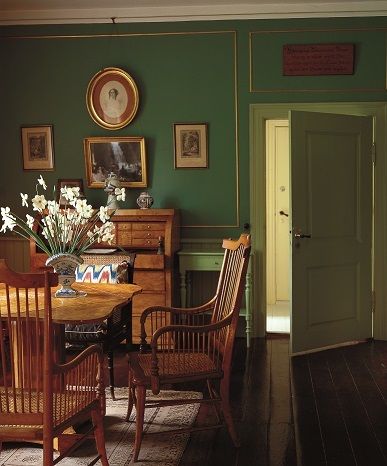There's more to Karen Blixen than Meryl Streep | reviews, news & interviews
There's more to Karen Blixen than Meryl Streep
There's more to Karen Blixen than Meryl Streep
A new play celebrates the Danish storyteller. Its adapter explores her unique appeal

Karen Blixen (1885-1962), the prolific Danish storyteller, is perhaps most immediately recognised for the portrayal of her and her works on the big screen, above all by Meryl Streep in Out of Africa. But her own story, and her place in the literary canon, can often be overlooked.
Blixen’s life is ripe for theatrical interpretation. She herself played many characters during her life, publishing under multiple pseudonyms, most exhaustively as Isak Dinesen. She lived in Kenya for many years and single-handedly managed a coffee plantation. Her love affairs and in particular her intense relationship with Denys Finch Hatton are well documented. She was also a society figure mixing with the celebrities of her day including Maria Callas, Marilyn Monroe and Arthur Miller. In later years, having returned to Denmark in 1931, her health deteriorated but her powers as a writer never waned.
 All of Blixen’s stories grip you – what is going to happen next? All of them evoke an intriguing atmosphere and sense of place. Whether it's a rough bar in a seaport, the opulent boudoir in a country mansion, or the cloistered solitude of an abbey, Blixen takes you there on her magic carpet. Many of her stories are set in the 18th and 19th century but they feel like they belong as much to dreamtime as to any historical period.
All of Blixen’s stories grip you – what is going to happen next? All of them evoke an intriguing atmosphere and sense of place. Whether it's a rough bar in a seaport, the opulent boudoir in a country mansion, or the cloistered solitude of an abbey, Blixen takes you there on her magic carpet. Many of her stories are set in the 18th and 19th century but they feel like they belong as much to dreamtime as to any historical period.
In spite of this sense of enchantment and of a parallel universe, Blixen's gaze is detached, unflinchingly trained on the violence, eroticism and disturbed mental states which lie below the surface. Everything is presented with great, even classical control lending her prose a rationalist, 18th-century feel. But this very control, together with her search for the right word and her terse descriptive powers, allows her the license to delve all the deeper into the darkness of the human psyche.
It's a perverse, even cruel place which is laid bare but also echoes with laughter. Displaying irony and wit, Blixen is like a dandy dancing over the abyss – a pierrot or clown entering the lion’s den.
It’s this sense of risk and playfulness which gives her work a very modernist sensibility. This is further reflected in the innovative form and structure of the stories. Many of them are stories-within-stories, a Chinese-box effect which plays with the reader’s sense of the real – especially when tales are told not just by one but several narrators.
The shifting tone is further enhanced by the seamless way in which Blixen weaves together mythology, folklore and the ancient story-telling traditions of the Bible and the Arabian Nights. Then there is the range of her political and philosophical reference, drawing in particular on the feminism which began to emerge out of the 18th-century Enlightenment. (Pictured below: Blixen's study in the Karen Blixen Museum in Denmark. Photograph by Jens Lindhe).
B ut she also embraced what has been called the Dark Enlightenment, the revival of interest in magic, hermeticism and the occult. Her work teems with characters who are magicians and witches. She once described herself as a witch. But she was also very aware of the tawdry, fake side of magic – reflected in all those mountebanks, charlatans and tricksters who also populate her work. There is a thin line between the artist and the con artist, between Jesus the miracle worker and Simon Magus the magician for hire. Along this thin line Blixen drives a coach and horses, all the while its occupants conveying stories to each other.
ut she also embraced what has been called the Dark Enlightenment, the revival of interest in magic, hermeticism and the occult. Her work teems with characters who are magicians and witches. She once described herself as a witch. But she was also very aware of the tawdry, fake side of magic – reflected in all those mountebanks, charlatans and tricksters who also populate her work. There is a thin line between the artist and the con artist, between Jesus the miracle worker and Simon Magus the magician for hire. Along this thin line Blixen drives a coach and horses, all the while its occupants conveying stories to each other.
Blixen knew that as a writer she could never return to the oral tradition of story-telling. But she does evoke it, particularly the female tradition of the pre-literate storyteller in "The Blank Page". Women, like their male counterparts – sailors, ploughmen and masons – would tell stories while they worked, weaving cloth and spinning yarns. Textiles and the text: they share the same etymological root, the story and the cloth, the narrator and the weaver. Blixen’s typewriter is her loom.
- Out of Blixen adapted by Paul Tickell is at The Print Room at the Coronet from 3 to 22 April. Babette’s Feast, adapted by Glyn Maxwell from Karen Blixen’s short story, follows from 8 May to 3 June
- Read more First Person articles on theartsdesk
Share this article
The future of Arts Journalism
You can stop theartsdesk.com closing!
We urgently need financing to survive. Our fundraising drive has thus far raised £49,000 but we need to reach £100,000 or we will be forced to close. Please contribute here: https://gofund.me/c3f6033d
And if you can forward this information to anyone who might assist, we’d be grateful.

Subscribe to theartsdesk.com
Thank you for continuing to read our work on theartsdesk.com. For unlimited access to every article in its entirety, including our archive of more than 15,000 pieces, we're asking for £5 per month or £40 per year. We feel it's a very good deal, and hope you do too.
To take a subscription now simply click here.
And if you're looking for that extra gift for a friend or family member, why not treat them to a theartsdesk.com gift subscription?
more Theatre
 Ragdoll, Jermyn Street Theatre review - compelling and emotionally truthful
Katherine Moar returns with a Patty Hearst-inspired follow up to her debut hit 'Farm Hall'
Ragdoll, Jermyn Street Theatre review - compelling and emotionally truthful
Katherine Moar returns with a Patty Hearst-inspired follow up to her debut hit 'Farm Hall'
 Troilus and Cressida, Globe Theatre review - a 'problem play' with added problems
Raucous and carnivalesque, but also ugly and incomprehensible
Troilus and Cressida, Globe Theatre review - a 'problem play' with added problems
Raucous and carnivalesque, but also ugly and incomprehensible
 Clarkston, Trafalgar Theatre review - two lads on a road to nowhere
Netflix star, Joe Locke, is the selling point of a production that needs one
Clarkston, Trafalgar Theatre review - two lads on a road to nowhere
Netflix star, Joe Locke, is the selling point of a production that needs one
 Ghost Stories, Peacock Theatre review - spirited staging but short on scares
Impressive spectacle saves an ageing show in an unsuitable venue
Ghost Stories, Peacock Theatre review - spirited staging but short on scares
Impressive spectacle saves an ageing show in an unsuitable venue
 Hamlet, National Theatre review - turning tragedy to comedy is no joke
Hiran Abeyeskera’s childlike prince falls flat in a mixed production
Hamlet, National Theatre review - turning tragedy to comedy is no joke
Hiran Abeyeskera’s childlike prince falls flat in a mixed production
 Rohtko, Barbican review - postmodern meditation on fake and authentic art is less than the sum of its parts
Łukasz Twarkowski's production dazzles without illuminating
Rohtko, Barbican review - postmodern meditation on fake and authentic art is less than the sum of its parts
Łukasz Twarkowski's production dazzles without illuminating
 Lee, Park Theatre review - Lee Krasner looks back on her life as an artist
Informative and interesting, the play's format limits its potential
Lee, Park Theatre review - Lee Krasner looks back on her life as an artist
Informative and interesting, the play's format limits its potential
 Measure for Measure, RSC, Stratford review - 'problem play' has no problem with relevance
Shakespeare, in this adaptation, is at his most perceptive
Measure for Measure, RSC, Stratford review - 'problem play' has no problem with relevance
Shakespeare, in this adaptation, is at his most perceptive
 The Importance of Being Earnest, Noël Coward Theatre review - dazzling and delightful queer fest
West End transfer of National Theatre hit stars Stephen Fry and Olly Alexander
The Importance of Being Earnest, Noël Coward Theatre review - dazzling and delightful queer fest
West End transfer of National Theatre hit stars Stephen Fry and Olly Alexander
 Get Down Tonight, Charing Cross Theatre review - glitz and hits from the 70s
If you love the songs of KC and the Sunshine Band, Please Do Go!
Get Down Tonight, Charing Cross Theatre review - glitz and hits from the 70s
If you love the songs of KC and the Sunshine Band, Please Do Go!
 Punch, Apollo Theatre review - powerful play about the strength of redemption
James Graham's play transfixes the audience at every stage
Punch, Apollo Theatre review - powerful play about the strength of redemption
James Graham's play transfixes the audience at every stage
 The Billionaire Inside Your Head, Hampstead Theatre review - a map of a man with OCD
Will Lord's promising debut burdens a fine cast with too much dialogue
The Billionaire Inside Your Head, Hampstead Theatre review - a map of a man with OCD
Will Lord's promising debut burdens a fine cast with too much dialogue

Add comment